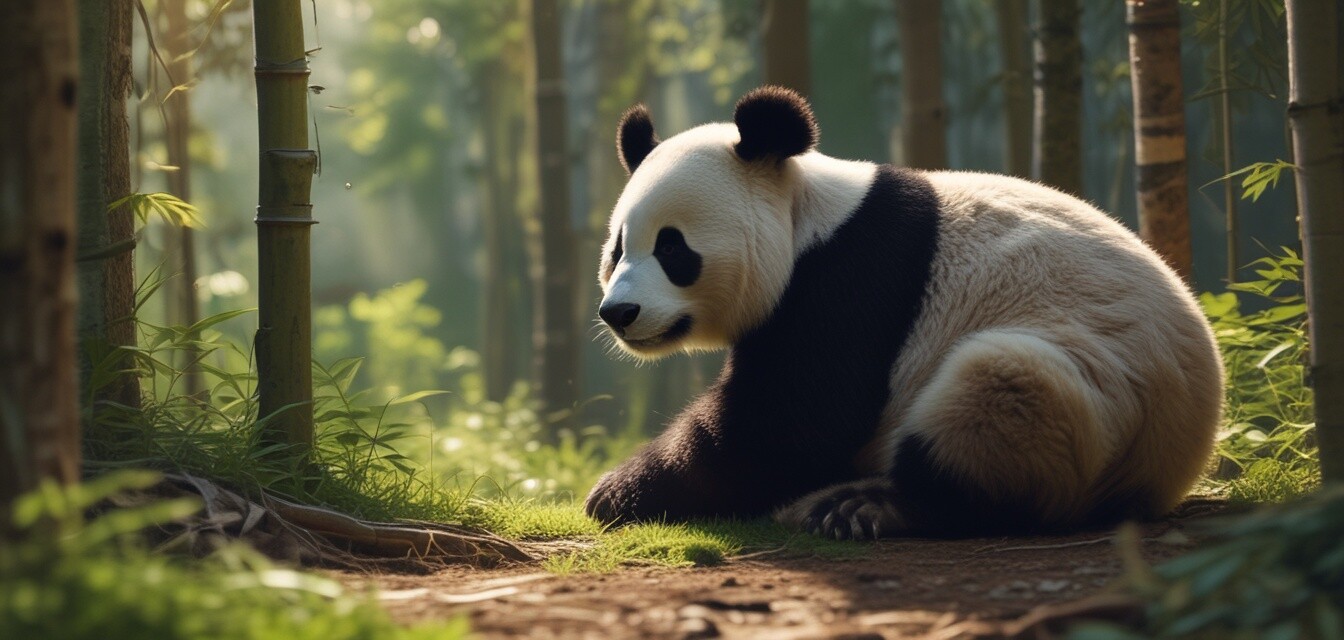
Inside a Panda's Den: What It's Like
Key Takeaways
- Pandas create cozy dens primarily in hollowed-out trees or caves.
- The average size of a panda den ranges between 25 to 100 square feet.
- Pandas use their dens mostly for refuge and to raise their young.
- These habitats often include a varied selection of bamboo and other vegetation.
- Environmental factors play a significant role in den selection.
Welcome to a journey inside a panda's den! Here, we’ll uncover the intricacies of how these adorable creatures construct their habitats and how their natural behaviors influence their choices. From the cozy dens made for safety to the lush surroundings, the world of pandas is as fascinating as it is heartwarming.
Panda Den Characteristics
Pandas are known for their unique architectural style when it comes to their dens. Typically, they select locations that provide safety, comfort, and access to food. Let’s take a closer look at what defines a panda's den.
| Characteristic | Description |
|---|---|
| Location | Most dens are located in mountainous regions, surrounded by bamboo. |
| Construction Materials | Pandas utilize natural materials like branches, leaves, and even earth. |
| Size | The average den spans anywhere from 25 to 100 square feet. |
| Purpose | Provides shelter from weather and a safe place for raising young. |
Den Building Process
The process of creating a den is a meticulous one for pandas. While they aren't known for being highly structured builders, they do have certain preferences when crafting their dwellings.
- Site Selection: Pandas look for elevated sites that offer some security from predators.
- Material Gathering: They gather soft materials like leaves and moss to line the inside of their dens, enhancing comfort.
- Insulation: Dense foliage serves to keep the den warm during cooler months.
- Maintenance: While they may not frequently renovate, pandas ensure their space is clean and cozy.
Pandas and Their Environment
The ecosystem plays a crucial role in the choices pandas make regarding their den locations. The availability of bamboo and other vital resources must be considered. Moreover, seasonal changes can greatly influence their comfort and safety, dictating where they build their dens.
Interesting Facts About Pandas and Their Dens
There are many fascinating aspects of pandas and how they use their dens. Here are some interesting insights:
- Pandas are solitary animals but often prefer denning amongst familiar territories.
- The dens have been found to have remnants of bamboo, leftovers from the panda's meals.
- Mother pandas will spend a great deal of time in the den with their newborn cubs, providing them warmth and protection.
- Dens can often serve as sites for resting and grooming, in addition to food storage.
Environmental Impact on Panda Habitats
Climate change and habitat destruction pose significant threats to the natural living conditions of pandas. Preservation of their habitat is essential not only for their survival but also for the health of the ecosystem.
For those interested in how to support these majestic creatures and their environments, check out our article on panda and red panda buying guides.
Pros
- Pandas have adapted well to various environments.
- They contribute to the ecosystem through their feeding habits, promoting bamboo growth.
- Cozy dens provide a nurturing space for young cubs.
Cons
- Their natural habitat is shrinking due to human activities.
- Pandas can be picky about den locations, leading to potential difficulties in adaptation.
- Challenges with food availability in changing climates.
Conclusion
Panda dens are more than just a shelter; they reflect the essence of what it means to be a panda. Understanding their denning habits not only highlights the adaptations pandas have made but also emphasizes the urgent need for their conservation. We all have a part to play in preserving the environments of these extraordinary creatures. To learn more about how you can support home for pandas, visit our page on Panda accessories.
Stay tuned to our Panda and Red Panda News blog category for the latest updates and stories about these beloved animals!

